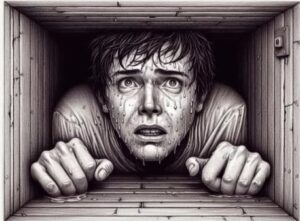The Unspoken Struggle: Prostate MRI and Claustrophobia
In the world of prostate health, MRI scans have emerged as a crucial diagnostic tool. They offer detailed images that can detect early signs of cancer and guide treatment decisions. However, there’s an elephant in the room that many medical professionals seem to overlook: claustrophobia.

I’ve been there myself. Each time I’ve gone into an MRI machine, I’ve needed medication like Valium or Xanax just to stay in there for a moment. Even with these drugs in my system, the tight, enclosed space of the MRI triggers an overwhelming sense of panic. It’s not just a passing feeling of unease; it’s a full – blown physiological response that makes it incredibly difficult to endure the scan.
I’m not alone in this struggle. I know others who, despite taking medication, found that it couldn’t overcome their claustrophobia. They had to be put under anesthesia to complete the MRI. This is not only a traumatic experience but also a significant deterrent for many men.
The fear of going through such a distressing ordeal can stop people from seeking early detection. And in the case of prostate issues, early detection can be the difference between successful treatment and a much more challenging battle.
I’ve spoken to countless men who have faced the daunting prospect of an MRI for prostate screening. The majority of them describe the experience as terrifying, with the tight confines of the machine triggering intense feelings of panic and anxiety. And yet, when they express their concerns to their doctors or technicians, they’re often met with bewilderment or dismissal.
It’s as if medical professionals expect patients to simply “tough it out” and endure the discomfort for the sake of their health. But here’s the thing: claustrophobia is a real and valid condition. It’s not a sign of weakness or a lack of courage. It’s a physiological response to being in a confined space, and it can be incredibly debilitating.
So why do medical pros act as if it’s odd when a patient can’t stand the MRI? One reason may be a lack of understanding. Many doctors and technicians have never experienced claustrophobia themselves, so they can’t fully appreciate the severity of the symptoms. They may also be more focused on the medical benefits of the scan and less concerned with the patient’s emotional well – being.
Another factor could be the pressure to meet diagnostic targets. In today’s healthcare system, there’s often a rush to get people in and out of the MRI machine as quickly as possible. This can lead to a lack of empathy and a failure to address the people fears.
But the consequences of ignoring claustrophobia can be significant. For some people, the anxiety associated with an MRI can be so severe that they avoid getting the scan altogether. This can delay diagnosis and treatment, potentially putting their health at risk.
So, what can be done? First and foremost, medical professionals need to be more aware of claustrophobia and its impact on people. They should take the time to discuss the people ‘s concerns and offer alternative options, such as an open – bore MRI or sedation.
People, on the other hand, should feel empowered to speak up about their fears. Don’t be afraid to ask questions and advocate for yourself. You have the right to a comfortable and stress – free medical experience.
Claustrophobia is a common and legitimate issue when it comes to prostate MRIs. Medical professionals need to do better in recognizing and addressing this problem. By working together, we can ensure that people receive the care they need without having to endure unnecessary fear and anxiety.
